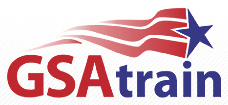This Microsoft SharePoint 2016 Training Course is designed to complement skills learned in other Microsoft Microsoft SharePoint 2016 Training Courses, which focus on overall SharePoint 2016 server administration and deployment as well as overall Office 365 management:
- MOC 20339-1, Planning and Administering SharePoint 2016
- MOC 20339-2, Advanced Technologies of SharePoint 2016
- MOC 20347, Enabling and Managing Office 365
Audience profile
This Microsoft SharePoint 2016 Training Course is intended for those who provide site collection and site administration and are power users or IT professionals who are tasked with supporting or working within the SharePoint 2016 environment on-premise and/or in Office 365.
At Microsoft SharePoint 2016 Training Course completion
After completing this Microsoft SharePoint 2016 Training Course, students will be able to:
- Design and implement a company portal structure using SharePoint 2016 objects including sites, libraries, lists and pages
- Explain the role of security and permissions throughout SharePoint 2016
- Implement guidelines for consistency in building a company portal to aid in the day-to-day administration of content in SharePoint 2016
- Enhance the design and content of a company portal using SharePoint 2016 pages and web parts
- Explain the importance of governance for the planning and managing future growth of the
- SharePoint 2016 implementation
- Identify options to integrate data from other systems such as Microsoft Office, as well as preserve existing data
- Explain the role of social networking in SharePoint 2016 and its impact on collaboration

